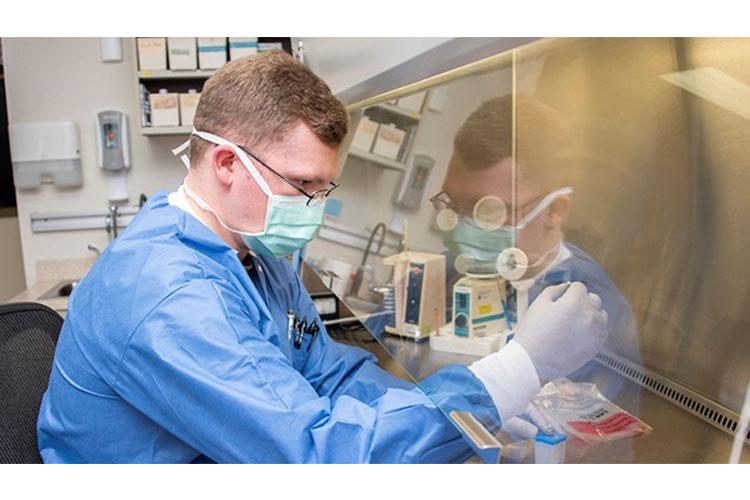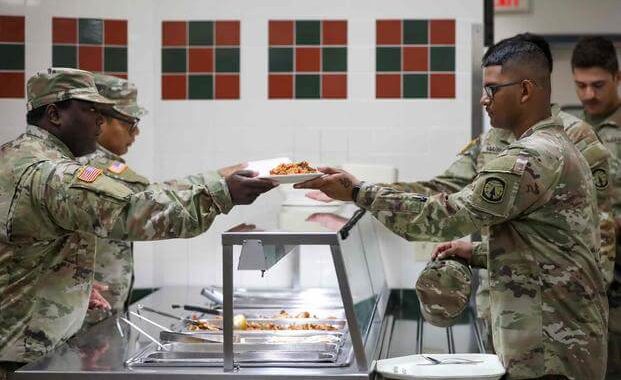COVID-19 Leads to Innovation in Military Health Care Practices
4 min read
The arrival of the novel coronavirus brought many challenges to the health care community. Doctors, researchers, and policymakers around the world had to face the virus and determine the best ways to keep their communities safe. This discussion and collaboration resulted in many medical practice and policy innovations.
The military is no exception. Health care professionals throughout the Military Health System worked together to address the new normal, changing how care should be brought to patients worldwide.
U.S. Assistant Secretary of Defense for Health Affairs Thomas McCaffery iterated that innovation in the MHS supports the Department of Defense’s priorities in COVID-19: protect the workforce, maintain military readiness, and support the national response.
“The Military Health System is serving on the frontlines against this invisible enemy,” McCaffery said, “bringing all that we have to bear across our military medical expertise, research and development, and our far-reaching, world-class system of health care and military medical combat support capabilities.”
Each category McCaffery mentioned supports patient-centered care. With the quick spread of the novel coronavirus and COVID-19, hospitals and clinics found creative ways to care for patients while preventing spread of the disease.
Inventive practices like drive-up pharmacies and immunization clinics allowed patients to continue receiving medication without having to set foot in the hospital. MHS expedited COVID-19 and flu test results to help patients take action quickly if their results came back positive.
Many hospitals also increased their telehealth capabilities, caring for patients over the phone or via video call when they could. Channels like the MHS Nurse Advice Line saw a higher call volume in the initial rush of the pandemic. The Defense Health Agency even made temporary changes to telehealth regulations so patients could enjoy more access to telehealth services, and health care providers could expand their reach to provide it.
Within hospitals, unique problems arose that required solutions. A team from Keesler Air Force Base in Biloxi, Mississippi, prototyped a proning shelf to help COVID-19 patients suffering from acute respiratory distress syndrome breathe easier. Scientists and engineers at Naval Surface Warfare Center Panama City Division developed low-cost, easily-assembled ventilators as part of the DoD Hack-a-Vent Innovation Challenge.
Once FDA-approved, these ventilators can be rapidly prototyped and used to support critical care requirements like complications from COVID-19 in hospital and field settings around the world.
Providers were aided by DoD and the Department of Veterans Affairs launching the joint health information exchange. This electronic exchange helps medical professionals safely and securely access patient health information and medical records, and share it as necessary to provide care. The JHIE supports more informed decision-making for the health care of service members, veterans, and family members, regardless of where patients access care.
DHA also gathered experts from the field to create a tri-service Infection Prevention and Control Tiger Team. The IPC Tiger Team provides evidence-based answers about COVID-19 to roughly 475 military hospitals, medical clinics, and dental clinics within the MHS.
As hospital and clinic operations changed to meet new challenges, the MHS required more boots on the ground to provide health care to patients.Military hospitals in New York City and Los Angeles quickly reached capacity to treat patients with COVID-19, so DoD deployed hospital ships, USNS Comfort to New York and USNS Mercy to Los Angeles for medical support. In addition, National Guard reservists answered the call to help staff overwhelmed hospitals in New York City.
Medical students at the Uniformed Services University for Health Sciences also stepped up to staff hospitals. USU adjusted coursework for its students to learn more about COVID-19, and many of those students graduated early to support the MHS as doctors and nurses.
While hospitals staffed up on the front end, the country still needed to find a vaccine on the back end. MHS professionals in research and development aid in the quest for a vaccine. Researchers at DHA’s Joint Pathology Center added their expertise to the mix to help health care providers better understand COVID-19. JPC studies tissue samples under the microscope, showing patterns that emerge from the damage that the respiratory virus leaves in the human body.
New approaches to genome sequencing have been critical to this equation. The Global Emerging Infections Surveillance section of DHA’s Armed Forces Health Surveillance Branch used existing partnerships with Army, Navy, and Air Force public health and medical research laboratories to research genome sequencing. The team worked together to create a collaborative approach to sequencing the severe acute respiratory syndrome coronavirus 2, or SARS-CoV-2, genome. This virus strain causes COVID-19.
The Air Force Genetics Center of Excellence at Keesler AFB also conducted research with DoD partners into sequencing SARS-CoV-2. Through these partnerships, DoD researchers gained the ability to isolate the virus, share samples, and compare laboratory methods to improve genome sequencing capabilities.
Although many strides have been made to combat the novel coronavirus, there is still room for innovation. The expansion of telework capabilities in response to the national emergency may become a part of the “new normal.” Research into convalescent plasma from patients who have contracted and recovered from COVID-19 can help researchers develop an effective treatment for the disease.
The MHS stands ready to continue innovating to provide quality health care to its beneficiaries throughout the armed forces and support the safety of the nation.
“We remain focused on supporting the Department in this complex and challenging environment with the best that military medicine has to offer,” McCaffery said. “We are proudly continuing to deliver on that obligation.”
Military Health System Communications Office





